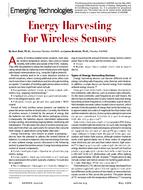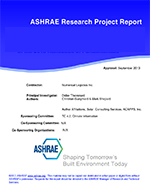Click here to purchase
Evaluating the thermal performance of the building stock using traditional methods (e.g., energy audits) can be cost prohibitive, especially if it aims to cover hundreds or thousands of buildings. This paper presents a novel data-driven approach to investigate the thermal performance of existing buildings using data collected from smart thermostats. The study focused on more than 11,000 Canadian homes and relied on real-time indoor and outdoor temperature measurements at 5-minute intervals over a period of four years. Two grey-box modelling approaches namely, least-squares fitting of 1) decay curves, and 2) numerically integrated thermal energy balance equations were used to estimate a thermal time constant for each house. It represented the time it takes for a house to achieve a new thermal equilibrium in response to changes in its internal and external thermal conditions. The resulting time constant values from both models were analyzed with respect to ASHRAE climate zones, building-age, building-style, and floor-area. Results indicated that building age was the most influential factor on these values, irrespective of the modelling approach. Given the correlation between building age and changes in Canadian building code provisions, the effect of code changes on these buildings’ thermal performance was also investigated. By using a large sample size covering thousands of buildings nationwide, results of this research are beneficial for code officials and policymakers to confirm the effect of previous code changes on the building stock and can inform the development of new energy codes and retrofit programs.
Citation: 2021 Virtual Conference Papers
Product Details
- Published:
- 2021
- Number of Pages:
- 9
- Units of Measure:
- Dual
- File Size:
- 1 file , 1.6 MB
- Product Code(s):
- D-VC-21-C008


